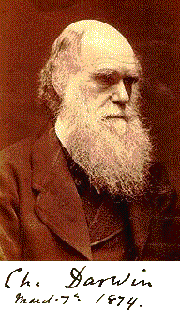| Major Medical Information Databases
|
|
BioMed Central : Publishes peer reviewed research in all areas of biology and medicine, with immediate, barrier-free access for all.
PubMed Central : Includes links from article reference citations to PubMed abstracts with supplementary information such as data tables, streaming video, and high-resolution images.
Public Health Image Library : CDC collection of still images, image sets, and multimedia files related to public health.
PathWeb's Search Engine : Search on specific diseases, organs and disease processes, specimen site map and PathCrawler.
|
|
Medical Journals and Publications
|
|
Reports of the Surgeon General: Offers over 70 reports from the years 1964 to 2025, as well as workshop proceedings, pamphlets, and other documents. Read the 1964 report in which Luther Terry indicted cigarettes for causing lung cancer, or page through C. Everett Koop's 1986 volume on the AIDS epidemic, which outraged political conservatives by calling for sex education in the schools.
Free Medical Journals:
Hundreds of biomedical journals provide free access to at least some of their content. Some offer free access to every article, others wait for up to 2 years, still others allow browsing for a trial period. About 700 research and clinical titles.
Ecology and Evolution of Infection : Science articles on themes such as antibiotic resistance and parasitology, Web resources on diseases, their evolution, and the challenges of emerging infections.
|
|
Human Organs and Anatomy
|
|
Brainpop : Health, Science and Technology content is based on original, animated movies created to explain the human body and the world around us in an engaging, interactive journey for kids.
Human Anatomy Diagrams : Ten human systems (skeletal, reproductive, vascular, etc.) may be viewed and explained. Large glossary of anatomical terminology.
Sections Through the Human Body : An interactively annotated website. Click on a specific area to learn about a given structure, or click on the hypertext "key points" to have them outlined for you.
The Heart: An Online Exploration : From the moment it begins beating until the moment it stops, the human heart works tirelessly. In an average lifetime, the heart beats more than two and a half billion times, without ever pausing to rest. Like a pumping machine, the heart provides the power needed for life.
Gray's Anatomy : Gray’s Anatomy of the Human Body features 1,247 vibrant engravings—many in color—from the classic 1918 publication, as well as a subject index with 13,000 entries ranging from the Antrum of Highmore to the Zonule of Zinn.
Encyclopedia of Human Anatomic Variation : A well-developed tail is characteristic of the human embryo in the second month. Usually during the third month the tail regresses and disappears as an anatomic external feature. Occasionally the tail persists and grows with the rest of the body (to as long as 23 cm).
Human Appendix : The appendix may be particularly important early in life because it achieves its greatest development shortly after birth and then regresses with age, eventually resembling such other regions of GALT as the Peyer’s patches in the small intestine.
Vein Treatment Center : The second heart is a system of muscles, veins, and valves in the calf and foot that work together as a pump to help push blood back towards the heart with every step. Valves act as trap doors, allowing blood to flow in only one direction, open with each muscle contraction and close when muscles relax.
|
|
Evolutionary Medicine
|
|
In Search of the Secrets of Aging : Life span and expectancy, aging theories, the genetic connection, longevity genes, cell senescence, biochemistry and aging. From NIH.
ProMED Mail : A global electronic reporting system for outbreaks of emerging infectious diseases & toxins, open to all sources.
Molecular Evolution of Prions :
The disturbing link between the prions that cause Bovine Spongiform Encephalopathy in cattle and Creutzfeld-Jakob Disease in humans comes from a study of the evolutionary relationships of prions in a wide variety of mammals.
Phage Ecology and Evolutionary Biology : Next time you're laid low by strep throat or a sinus infection, take comfort in knowing that those misery-inducing bacteria may themselves fall victim to disease. In fact, bacteria-slaying viruses known as bacteriophages may be the most diverse and numerous organisms on the planet.
|
|
Quack Devices and Health Hoaxes
|
|
Current Health-Related Hoaxes & Rumors : Heard about those flesh-eating Costa Rican bananas? Pure fiction, of course, but such rumors abound. This website provides calm, factual information on such matters as why scientists consider HIV the cause of AIDS and why bananas can't spread the bacteria that cause necrotizing fasciitis (the microbes are unlikely to live long on the fruit).
The Museum of Questionable Medical Devices : Dubbed "The Quackery Hall of Fame" by the Copley Wire Service, the museum is the world's largest display of what the human mind has devised to cure itself without benefit of scientific method or common sense.
|
|
Genetic Disease and Disorder
|
|
Obesity Gene Map : This database describes nearly 80 human genes thought to be involved in obesity such as the gene for the blood-sugar regulator insulin and the gene for leptin, a hormone that governs body fat and appetite.
Asthma Gene Database : The Asthma Gene Database Web site serves up results from more than 800 studies that have tried to link particular genes to asthma or allergies.
Frequency of Inherited Disorders : This new database gathers figures on the prevalence of more than 280 inherited disorders, including cystic fibrosis, Tay-Sachs disease, and Fanconi anemia. The entries draw from more than 1000 studies, providing frequency data and links to the original abstracts in PubMed.
Biogeography and Ecology of Sickle Cell Anemia : Almost as soon as sickle cell anemia was recognized as a blood-based disease, its higher frequency in families of African descent was noted. However, while the frequency of sickle-cell trait in Africa was three times that in the United States, sickle cell disease was much less common. See also Joint Center for Sickle Cell and Thalassemic Disorders and
Sickle Cell Trait Combats Malaria.
|
| Other Topics That Might Be of Interest
|
|
Forensic Entomology : Click on the "Forensic Entomology" tab. Good discussion of the topic, plus 38 relevant links to additional resources.
Forensic entomology is the use of insect knowledge in the investigation of crimes or even civil disputes. It is one of the many tools of forensic science.
A New Germ Theory : Diseases we have long ascribed to genetic or environmental factors -- including some forms of heart disease, cancer, and mental illness -- are often actually caused by infections.
Wiping Out Meningitis C : In Great Britain, Meningitis C kills one in ten people infected. An estimated 500 cases have been prevented, and 50 lives saved by a new vaccination programme.
Foodborne Pathogenic Microorganisms and Natural Toxins
Pathogens and poisons can lurk in your lunch, so check out the Bad Bug Book, a rogues' gallery that combines information on food safety from the FDA and other federal agencies.
Airborne Pathogens : Aerobiology is the study of microorganisms in the air which may be detrimental to human health. Included among these organisms are viruses, bacteria and fungi in our buildings.
|
|
|
Allied Topics
|
Embryology
Genetics
Immunology
Neurology
Virology
|
|
Course of Study Outlines
|

Immunology Course and Animations
Human Histology, Molecular Movies
The Internet Pathology Laboratory
Images and tutorials assist students in learning about pathology of disease.
Medical Microbiology: 100+ chapters explain ordinary and exotic disease.
Microbiology & Immunology Textbook
Neuromuscular Disease Center
|
|
Glossaries & References
|
|
Alphabetical List of Diseases/Disorders
Health Topics A to Z : from the CDC
Search for Biomedical Acronyms
Who Named the Disease?
|
|
Parasites & Parasitology
|
|
The Parasitology Images List
Parasitology Diagnostics : Introduction to medically important parasites.
Parasites and Parasitological Resources
Images of 180+ species of parasites.
Korkmaz's Parasitology Resources
Hitch-hiking DNA—Parasitology Guide
|
|
Cancer
|
|
Database of Aberrations in Cancer
Atlas of Cancer Genetics : Information for each of 260 or so major genes known to be involved in cancer.
|
|
Dedicated Research Orgs
|
|
Malaria Foundation International
Alzheimer Research Forum
Osteogenesis Imperfecta Foundation
Osteoporosis & Related Bone Diseases
American Lyme Disease Foundation
|
|
Clinical Trials
|
|
ClinicalTrials.gov : NIH and the National Library of Medicine have developed this site to provide patients, family members and the public current information about clinical research studies.
|
|
Speech & Communication
|
|
Communication Disorders & Sciences : For almost every disorder that affects speech and communication, from stuttering to a movement malady called apraxia, there are links on this site. Although many are aimed at the public, researchers and grad students will find useful resources including scientific papers, 3D views of sinuses, more.
|
|
Hearing Loss
|
|
Hereditary Hearing Loss :
Hearing specialists expect a surge in deafness as people of a certain age begin to pay for the thunderous concerts and throbbing discos of their youth. Nevertheless, more than half the cases of fading hearing in developed countries are caused by genes rather than ear abuse.
Deafness in Disguise Exhibit : Today's dainty hearing aids descended from the cumbersome ear trumpets and speaking tubes of the early 1800s. This exhibit traces the history of hearing devices in the 19th and 20th centuries, emphasizing the clever camouflage used to conceal the impairment.
|
|
Populations and Health
|
|
UN World Population and Health Data
Provides values and projections for 28 key population variables, including size, growth rate, and density. Another source of information is the Population Reference Bureau. Published annually, the handy World Population Data Sheet collates estimates of population size, birth and death rates, and other vital statistics for every country.
|
|


